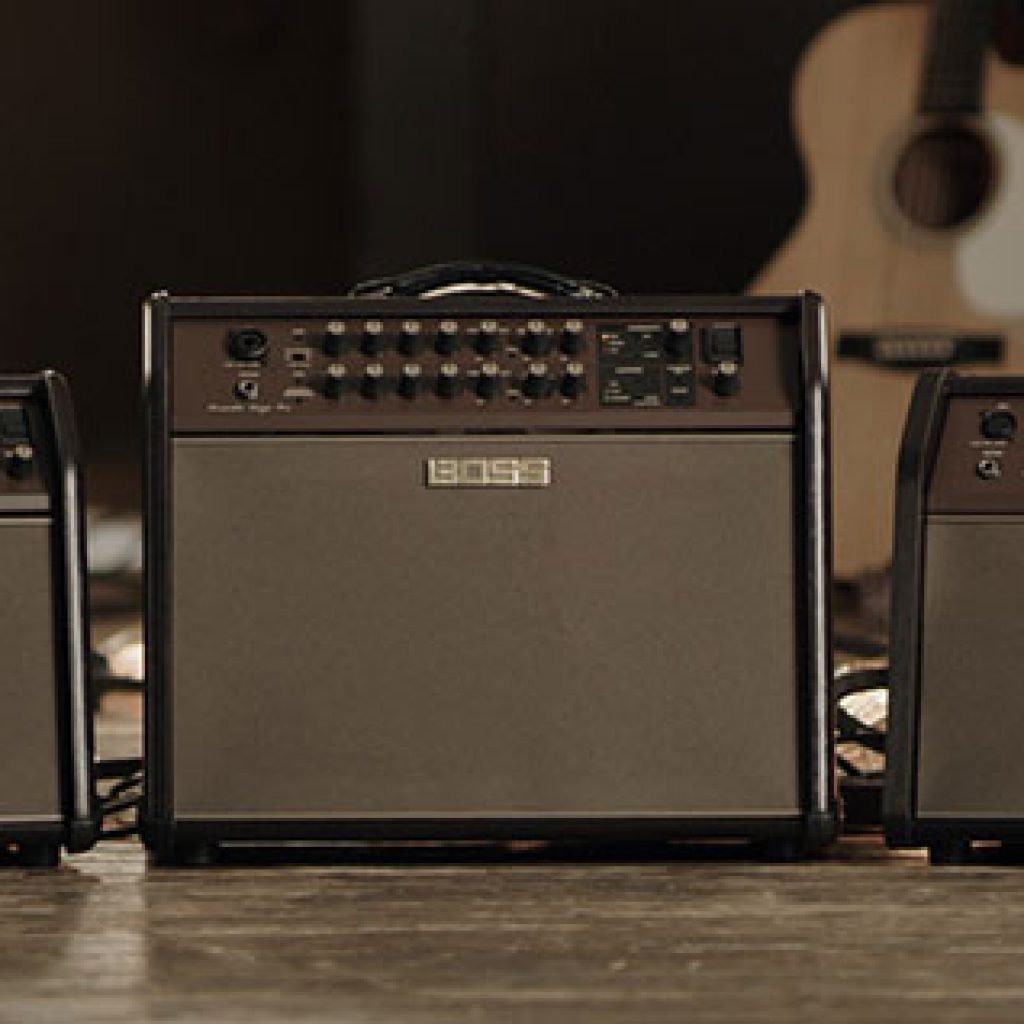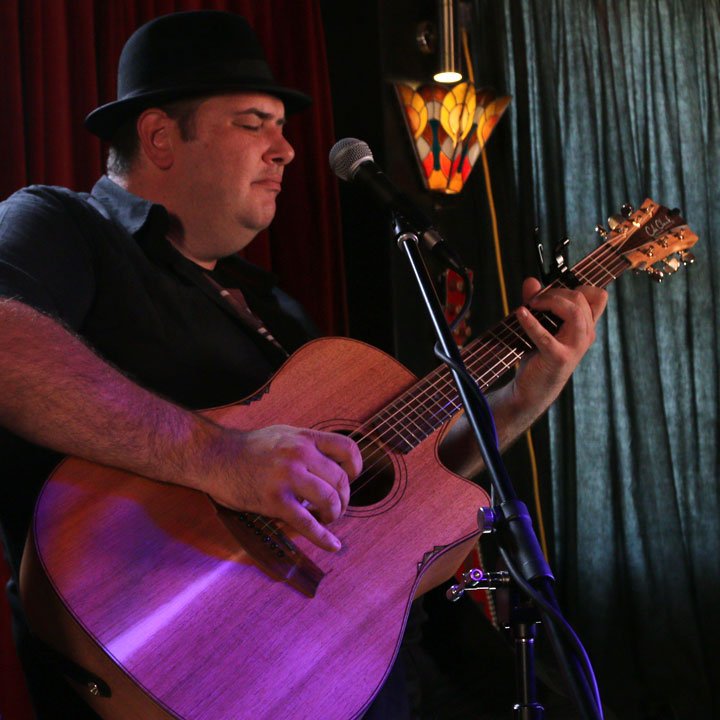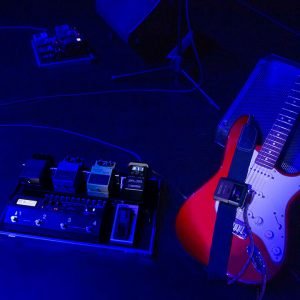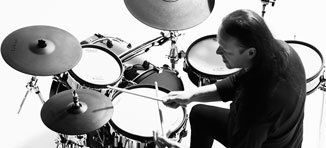So you’ve honed your acoustic guitar chops, and you want to take your playing to the stage!
Acoustic guitars sound great, but by their very definition they’re, well, acoustic – so if you want your audience in the club, café or bar to hear what you’re playing on your acoustic guitar, you have to amplify it.
If you’re looking to take your live playing to the next level, here are a few different ways to amplify your pickup-equipped acoustic guitar for live performance, and the pros and cons depending on what your needs are. With a bit of research you can determine what works best for you, your sound and your intended audience. Let’s go!
1. Straight into the PA
This is the simplest and most cost-effective way to amplify your sound – simply plug into the PA system provided by the venue. You don’t require any extra gear beyond your guitar, your cable and your sweet self. But this is also the most sonically fraught and unpredictable method because it leaves you utterly at the mercy of the PA.
Most acoustic guitars with a pickup/preamp system these days have, at the very least, a three-band EQ and volume control, to allow you to tweak your sound. However, this still leaves you at the mercy of the PA system – and not all PA systems are created equal, nor is there going to be a sound engineer at every gig (in fact, odds are that for most smaller performances, you definitely won’t have a sound person!).
Pros: cheapest solution – doesn’t directly cost anything
Cons: inconsistent sound, at the mercy of venue equipment and soundperson (or lack thereof!)
2. Preamp/DI pedal
The next step up is to use a preamp or DI (direct injection) pedal. This works well if you’ve got a consistent PA that you know well and use regularly – e.g. your band’s PA system, or a residency gig that you know always has the same PA in-house.
Putting a preamp pedal between your guitar and this familiar PA system will then afford you a lot more control over the sound of your guitar before it hits the PA.
A basic DI might just feature simple tone and volume controls, but once you start getting into pedals and processors you’re going to find a whole world of sonic options to help you shape your sound.
A good example is the BOSS AD-10 Acoustic Preamp, which incorporates stage-ready features like compressor and feedback reduction along with handy effects like chorus, delay, and reverb – and even options to enhance your performance like an in-built looper! It even features an Acoustic Resonance control, which helps to restore the natural “body” of your guitar sound that is often lost when transmitted through a piezo pickup system.
If you’re a singer and guitar player, you might consider the BOSS VE-8 Acoustic Singer, which includes a vocal mic input and effects too, and can even sense the chords you’re playing on guitar in order to generate vocal harmonies to go with your singing.
One of the great things about this kind of unit is that it’s equally effective if you’re a singer/guitarist, or if you’re the guitarist and you’re working with a separate vocalist: you can control their vocal processing and harmonies while they do their whole connecting-with-the-crowd thing.
Pros: much more control over your sound, in a compact form factor
Cons: ultimately still tied to the PA system
3. Acoustic Guitar Amplifier

The BOSS Acoustic Singer range is perfectly suited to cater to any of these situations. The three models are all built on the foundation of a bi-amp design with separate woofer and tweeter which allows clear and natural sound reproduction throughout the frequency range without becoming muddy.
They all offer the Acoustic Resonance feature we discussed earlier, which restores the natural “body” to piezo-equipped instruments, plus independent three-band EQs, reverb for guitar and vocals (and chorus for guitar).
In addition, there are also useful features for gigging and recording such as an aux input with level control for backing music, XLR outputs to go to a bigger PA system, and a USB audio interface for computer recording/playback.
The ACS Pro and ACS Live models even have onboard looper and intelligent vocal harmony generation based on your guitar playing! If you don’t need the extra frills, then check out the new ACS Live LT.
Pros: the most consistent sound quality bar investing in a full PA, full control over your sound when playing in cafés, bars, or with a band
Cons: more gear to carry – but still easier than lugging a PA!
SUMMARY
So what it all comes down to is: how much control do you need over your sound, and how much interactivity do you require to deliver your performance?
If your role in the band is simply as a guitarist, a preamp/DI pedal will give you plenty of control over your sound.
If you’re a singing guitarist, a combined guitar/vocal pedal will simplifies some of the guitar functions so you can put more emotion into your singing.
And if you need lots of control over your guitar and vocals, and you need to effectively be your own PA system and sound engineer, an acoustic amplifier will have everything you need to be heard the way you want to be heard, in whatever situation you find yourself in.









